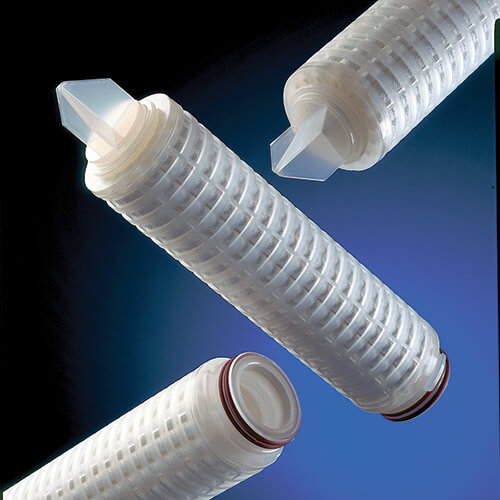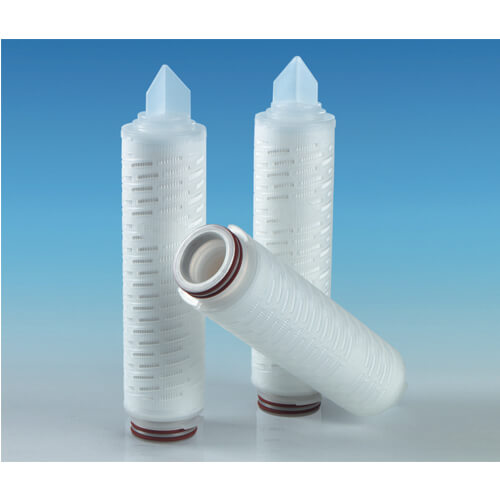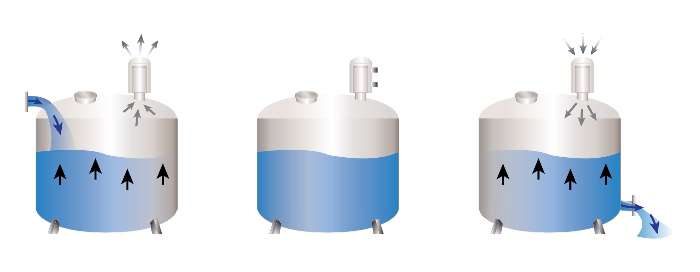Proteja o conteúdo de seu tanque com ventilação adequada para tanques de armazenamento
Os tanques de armazenamento para produtos de alimentos e bebidas, ingredientes, produtos químicos de limpeza e outros fluidos de processamento de alimentos são encontrados em todas as plantas de processamento de alimentos. Uma filtração por ventilação do tanque corretamente selecionada oferece uma barreira entre o conteúdo do tanque e o meio ambiente.
O objetivo da filtração por respiro do tanque satisfaz
- Proteção do conteúdo do tanque contra exposição a micro-organismos aerotransportados, vírus e/contaminantes físicos no ambiente circundante, evitando a degradação da qualidade deles
- Proteção do ambiente de fluidos agressivos do tanque que escapam para o meio ambiente
- Manutenção do equilíbrio de pressão dentro dos tanques para protegê-los contra o excesso de pressão ou danos por vácuo
Prevenção de contaminação por micro-organismos e vírus com filtração adequada
Os filtros selecionados para filtração por ventilação do tanque geralmente são filtros de cartucho de gás/ar estéril. Eles devem ser hidrofóbicos, pois os filtros umedecidos devido à umidade do ar circundante ou à exposição ao vapor impedem o fluxo de ar para dentro e para fora do tanque. É importante que eles também retenham micro-organismos e vírus transportados pelo ar (como bacteriófagos). E, por último, eles devem ser corretamente dimensionados para evitar danos ao tanque.
Gestão do fluxo de ar e manutenção do equilíbrio de pressão durante a transferência de líquidos em tanques
Os líquidos são bombeados para dentro e para fora dos tanques regularmente. Conforme os tanques são cheios, o ar é forçado para fora do tanque conforme o volume de líquido que entra desloca o volume de ar. À medida que são esvaziados, o ar da planta ao redor é drenado para dentro do tanque para substituir o volume de líquido. Os filtros para tanque de filtração por ventilação devem ser dimensionados de tal forma que não impeçam esse fluxo de ar para frente ou para trás, não interferindo na pressão de equilíbrio no tanque. Em tais aplicações, o filtro para tanque de filtração por ventilação é dimensionado para a maior taxa de enchimento da bomba ou a taxa de drenagem da bomba com uma taxa de fluxo de ar equivalente.
A importância do dimensionamento correto dos tanques de filtração por ventilação
A necessidade do dimensionamento adequado da filtração por ventilação do tanque é especialmente crítica em aplicações envolvendo esterilização de tanque no local (sterilization in place, SIP) com vapor. Após a esterilização do tanque, o vapor esfria e condensa rapidamente, criando uma mudança de volume e pressão negativa instantâneas. Há uma diferença de volume de mais de 1.000 vezes entre a quantidade de água na fase de gás (vapor) e na fase líquida. A entrada de ar resultante no tanque para substituir o volume absorvido pela condensação de vapor deve ocorrer rápido e com fluxo de ar suficientemente alto para não danificar o tanque.
Filtros para tanque de filtração por ventilação dimensionados incorretamente resultam em taxas de drenagem baixas da bomba, perda de proteção do conteúdo do tanque devido a colapso dos filtros ou ruptura dos discos e, no pior cenário, implosão ou deformação do tanque.
Dependendo se as aplicações são para uso com contato direto ou indireto com alimentos, aplicam se as regulamentações nacionais e internacionais.
A Pall possui mais de 60 anos de experiência na especificação de produtos de filtração por ventilação para tanques a fim de atender às suas necessidades relacionadas a alimentos e bebidas, incluindo filtros estéreis ou filtros de ar finais.
Preencha o formulário para receber as próximas comunicações

Pré-filtração de ar e gás

